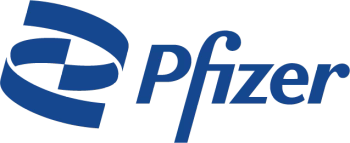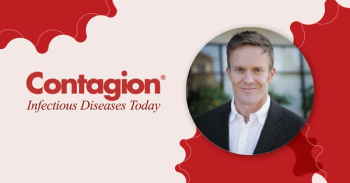
Hook Your Twitter Reader With Creative and Poetic Headlines
John Nosta, BA: Sometimes you have to be a little poetic on Twitter. Sometimes you just can’t transfer the title of the article. You’ve got to say, “Hey, look at this.” You know, there was an interesting study that looked at emerging resistant trends in MRSA [methicillin-resistant Staphylococcus aureus]. What the study did was put it on the shuttle on the space station. Under a zero-gravity situation, or microgravity, they thought maybe it would mutate more quickly and that we could get ahead of mutation patterns. Fascinating, right?
So I wrote a story about that. Most people didn’t want to read that. So I said, “Elon Musk just launched a lethal pathogen into space, and it might save your life.” All of a sudden, everybody wanted to know about the mutation patterns of MRSA. So I think language is effective.
Debra A. Goff, PharmD, FCCP: You’re right. That’s part of the art of tweeting.
John Nosta, BA: Yes.
Debra A. Goff, PharmD, FCCP: So you’re exactly right. People in medicine generally aren’t the most creative people. We’re scientific. We’re analytical. And so being creative is not our strength. So this topic title is boring. No one’s going to read that tweet. Now you tweak it and make it…
John Nosta, BA: Well, that’s the trick.
Debra A. Goff, PharmD, FCCP: That’s exactly what you have to learn. That’s the other degree I forgot to mention—the creative part, right?
John Nosta, BA: Wow.
Debra A. Goff, PharmD, FCCP: We write. We publish studies, but they’re scientific. You need to create a tweet that would engage the reader. When I am tweeting to surgeons I’ve got to find a way to make it engaging: “Duodenoscopes contaminated with…” I’m telling them something that I know they probably don’t know. With this gram-negative bacteria called KPC, I don’t expect them to even know what it stands for. They’re not an infectious disease expert. As a steward, it’s my job to say, “KPC [Klebsiella pneumoniae carbapenemase] means that none of these antibiotics will work. And then I link it to a PubMed abstract that’s scientific and factual. But my tweet has got to engage them or they’re never going to click on that link.
John Nosta, BA: And there’s the duality, right? The dissemination of scientific information from the professional should sound professional. It has to stick to the roof of your customer’s brain. When you can link it to a reference, that’s another duality that I think is important.
I want to go back to Ebola and talk about someone on another continent who touches us with an individual story that is not supported by data. That was a fascinating thing that you were telling me about.
Debra A. Goff, PharmD, FCCP: You know, the CDC actually studied this. They were really the epicenter of trying to coordinate the containment of Ebola. Of course, it went to a different level when Ebola arrived in the United States. I’m going to go back to my surgeon colleague, Dr. Ben Nwomeh, who is the king of tweeting for surgeons. He happens to be Nigerian, and he still returns to Nigeria several times a year. He has an amazing mentoring program that teaches surgeons in Nigeria how to be even better surgeons.
But he had family members right at the epicenter of Ebola. He made a tweet when it arrived in the United States. I can’t quote it exactly, but his tweet said something similar to: “Thousands have died in western Africa, and the world didn’t take notice or sort of ignored it. But 1 [case] in the United States, and the world stopped.”
John Nosta, BA: I remember the tweet, yes.
Debra A. Goff, PharmD, FCCP: Forbes monitors the top 15 health care tweets each year. His Ebola tweet was 1 ahead of Bill Gates’. You know that Ben Nwomeh has a lot of followers, but not the number that Bill Gates had.
Think of the power of Dr. Ben Nwomeh’s tweet on Ebola. The CDC actually studied it. It was their most effective communication tool. Why? Because it was real time. They could update the numbers. The other way to do it, you had to log on to the CDC website. That’s just not an efficient way. If you’re a surgeon sitting between cases, you can jump on Twitter from your phone and get an Ebola update. Honestly, the CDC’s website is phenomenal, but navigating it is a little complex. You can’t find stuff.
John Nosta, BA: The CDC is 10 lb of information in a 5-lb paper bag.
Debra A. Goff, PharmD, FCCP: Exactly.
John Nosta, BA: It’s extraordinarily important.
Debra A. Goff, PharmD, FCCP: Right. If you can find it, it’s there. The CDC actually published data. Their most effective communication tool was to teach the world about Ebola facts because there was so much misinformation going on. As soon as it uninformed, people were tweeting on treatment for Ebola. They were tweeting about things that were actually going to harm people.
John Nosta, BA: Yes.
Debra A. Goff, PharmD, FCCP: The CDC monitored all of those tweets and would quickly put that to rest. “This is not accurate. This is not correct.” People can tweet on anything, but it doesn’t have to be right.
Newsletter
Stay ahead of emerging infectious disease threats with expert insights and breaking research. Subscribe now to get updates delivered straight to your inbox.




